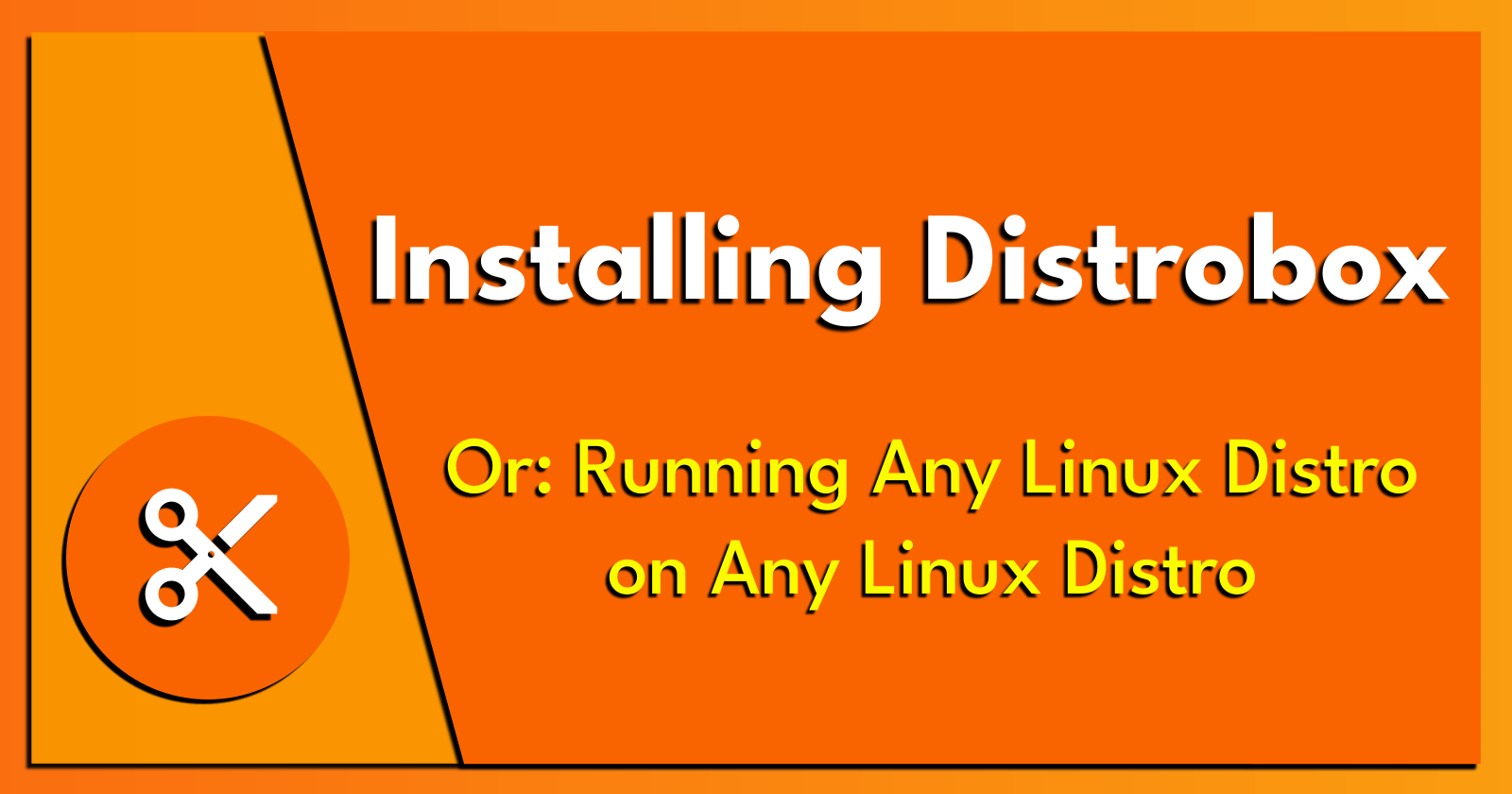Installing Distrobox.
 Brian King
Brian King
TL;DR.
Distrobox is a container system. The main advantages of using Distrobox include:
The isolation of container libraries,
Easy access to the host hardware, and
Easy access to the host file system.
Prerequisites.
A Linux-based distro (I use Ubuntu), and
An Introduction.
Distrobox is a utility that allows me to run other Linux distributions in my terminal. The advantage is that I can then run any app that was specifically designed for that distro. For example, I can run DaVinci Resolve on CentOS 7 in Distrobox on Ubuntu:
The purpose of this post is to demonstrate the installation process for Distrobox.
The Big Picture.
When it comes to container solutions, I usually reach for LXD/LXC (LinuX Daemon, the container manager, and the LinuX Containers themselves). The advantage is that running LXCs are isolated and, by default, cannot interfere with other containers or the (base) system. However, it is cumbersome getting data out of, and putting data into, a running LXC. This is where Distrobox shines. Although running processes are isolated, those processes can easily access the (base) file system and, if needed, the computer hardware as well.
Updating my System.
- From the (base) terminal, I update my (base) system:
sudo apt clean && \
sudo apt update && \
sudo apt dist-upgrade -y && \
sudo apt --fix-broken install && \
sudo apt autoclean && \
sudo apt autoremove -y
What is Distrobox?
Distrobox is a tool that allows me to run any Linux distribution within my terminal. It enables both backward and forward compatibility with any software, and the freedom to use whichever distribution I'm most comfortable with. Distrobox uses Podman, Docker, or Lilipod to create containers using the Linux distribution of my choosing. It aims to run any software, on top of my host system, without any hassle.
Installing Distrobox.
- I use the
Curlcommand to download, and run, the Distrobox installation script:
curl -s https://raw.githubusercontent.com/89luca89/distrobox/main/install | sudo sh
NOTE: If I'm nervous about running a foreign script, I can always download it and manually check its contents.
- After installation, the terminal displays the following:
Checking dependencies...
Downloading...
Unpacking...
Installation successful!
Shell scripts are located in /usr/local/bin
Manpages are located in /usr/local/share/man/man1
- I reboot my system to load the Distrobox settings into memory.
Uninstalling Distrobox.
- The following
Curlcommand removes Distrobox:
curl -s https://raw.githubusercontent.com/89luca89/distrobox/main/uninstall | sudo sh
Distrobox Environment Commands.
- I run the following to display a list of Distrobox commands:
distrobox
The Results.
Distrobox presents a powerful solution for managing Linux distributions, offering seamless integration with my host system. By isolating container libraries, providing easy access to host hardware, and ensuring straightforward interactions with the host file system, it enhances the versatility of my software development environments. Whether for development, testing, or running different applications in isolated environments, Distrobox simplifies the process, making it accessible those who are new to container technology. With Distrobox installed, I gain the ability to run a wide range of GUI and CLI applications directly from their preferred distributions, breaking down compatibility barriers and fostering a more productive computing experience.
In Conclusion.
Have I ever felt limited by my Linux distribution? Distrobox changes the game by allowing me to run any Linux distribution within my terminal. It's about giving me the flexibility to wrap my software in a layer of simplicity.
Here's why Distrobox is a game-changer:
Isolates container libraries.
Ensures easy access to host hardware.
Provides straightforward access to the host file system.
Prerequisites? Just a Linux-based distro (I’m on Ubuntu) and Docker. That’s it. Installing Distrobox is a breeze with a simple Curl command. But what truly sets Distrobox apart is its ability to offer both backward and forward compatibility with any software. It uses Podman, Docker, or Lilipod to create containers, making any software run on top of my host system without hassle.
The results? A powerful solution for managing Linux distributions, enhancing the versatility of software development environments, and breaking down compatibility barriers. Distrobox is not just a tool; it's a revolution for Linux users, making computing experiences more productive and enjoyable.
Learn more about Distrobox here: https://distrobox.it/
Have you tried Distrobox yet? What has your experience been like? Let's discuss below!
Until next time: Be safe, be kind, be awesome.
#Linux #Distrobox #SoftwareDevelopment #ContainerTechnology #OpenSource #TechTips #LinuxContainers #DevOps #Coding #Technology
Subscribe to my newsletter
Read articles from Brian King directly inside your inbox. Subscribe to the newsletter, and don't miss out.
Written by

Brian King
Brian King
Thank you for reading this post. My name is Brian and I'm a developer from New Zealand. I've been interested in computers since the early 1990s. My first language was QBASIC. (Things have changed since the days of MS-DOS.) I am the managing director of a one-man startup called Digital Core (NZ) Limited. I have accepted the "12 Startups in 12 Months" challenge so that DigitalCore will have income-generating products by April 2024. This blog will follow the "12 Startups" project during its design, development, and deployment, cover the Agile principles and the DevOps philosophy that is used by the "12 Startups" project, and delve into the world of AI, machine learning, deep learning, prompt engineering, and large language models. I hope you enjoyed this post and, if you did, I encourage you to explore some others I've written. And remember: The best technologies bring people together.